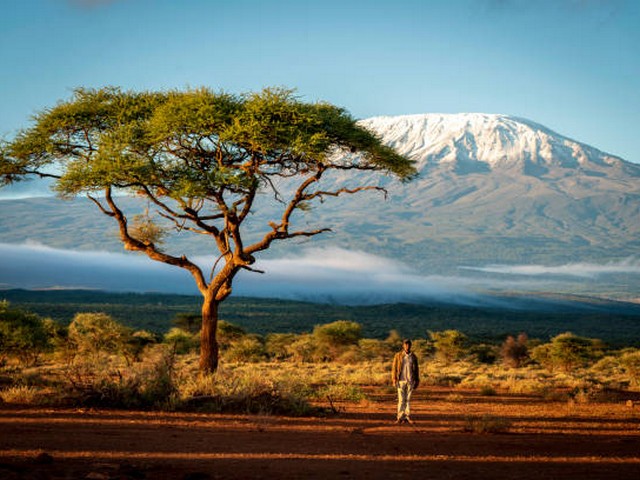How To Handle Kilimanjaro Altitude Sickness When Trekking Solo
Kilimanjaro calls the brave and bold to its lofty heights, offering views and experiences unmatched anywhere on the globe. For many adventurers, the journey to Uhuru Peak isn’t just about physical endurance; it’s a pilgrimage of personal discovery. However, the majestic climb comes with its unique set of challenges, the most notable being altitude sickness.
As a solo trekker, it’s crucial to understand and manage these challenges effectively. At Kilimanjaro Centre for Trekking and Ecotourism (KCTE), we’ve guided thousands to the summit safely and joyously. We’re here to share that wisdom, helping you conquer Kilimanjaro solo while keeping the mountain’s mystique alive.
Understanding Altitude Sickness
Altitude sickness, or Acute Mountain Sickness (AMS), is a reaction to the lower amounts of oxygen available at high elevations. Symptoms vary but can include headaches, nausea, dizziness, and extreme fatigue. Knowledge and preparation are your first lines of defense in managing these symptoms effectively during your solo ascent.
Recognize the Symptoms Early
- Mild AMS: Headache, dizziness, muscle aches, insomnia.
- Moderate AMS: Severe headache not relieved by medication, nausea, increased fatigue.
- Severe AMS: Shortness of breath at rest, inability to walk, decreasing mental alertness.
Preparing for Altitude: Tips Before Your Trek
Acclimatization is Key
Begin your journey with acclimatization days built into your itinerary. These allow your body to adjust slowly to higher elevations, reducing the likelihood of AMS. KCTE recommends routes that naturally assist in acclimatization by incorporating “climb high, sleep low” principles.
Physical Preparation
Boost your cardiovascular fitness months before your trip. The fitter you are, the better your body can cope with the demands of high altitude.
Dietary Adjustments
Hydration is crucial. Drink plenty of water before and during your climb. A diet rich in carbohydrates provides sustained energy, which is beneficial at high altitudes.
On the Mountain: Solo Trekker’s Guide to Managing Symptoms
Stay Hydrated
Dehydration is a significant contributor to altitude sickness. Drinking water regularly throughout your climb, even if you do not feel thirsty, is essential.
Pace Yourself
Remember, “pole pole” (slowly, slowly in Swahili) is the mantra on Kilimanjaro. Maintaining a pace that allows you to breathe easily helps prevent exhaustion and reduces the altitude impact.
Listen to Your Body
Solo trekking means listening intently to your body’s signals. Rest when necessary and be prepared to turn back if symptoms escalate. It’s not just about reaching the summit, but doing so safely.
Why Choose KCTE for Your Solo Kilimanjaro Adventure?
Trekking solo doesn’t mean you have to be alone in planning and preparation. Kilimanjaro Centre for Trekking and Ecotourism (KCTE) offers expert guidance tailored to solo trekkers.
-
Expert Guides: Our certified guides are trained in wilderness first aid and have years of experience leading trekkers to the summit. They understand the unique needs of solo trekkers and provide the right balance of support and independence.
-
Customized Itineraries: We design itineraries that optimize acclimatization and give you the best chance of a successful summit.
-
Safety First: With KCTE, your safety is our utmost priority. We ensure you have the right gear, guidance, and support to handle any situation on the mountain.
Climbing Safely and Successfully
Reaching the summit of Kilimanjaro is an exhilarating experience. By choosing to climb with KCTE, you’re not just selecting a tour operator; you’re choosing a partner who will ensure you’re prepared, confident, and capable of conquering Kilimanjaro safely.
FAQs
Q: How long should I acclimatize before attempting to summit?
A: We recommend at least two nights at an intermediate elevation and a slow ascent rate to maximize acclimatization.
Q: Can I take medication to prevent altitude sickness?
A: Medications like Acetazolamide can be used for prevention and treatment of AMS. However, consult with a healthcare provider before your trek to discuss its use.
Q: What should I do if symptoms of altitude sickness worsen?
A: Descend immediately to a lower altitude and seek medical help. Our guides are trained to assist in such situations and will ensure your safety.
Q: Is trekking Kilimanjaro solo safe?
A: Yes, with the right preparation and support from experienced guides like those at KCTE, many solo trekkers safely summit every year.
Conclusion
Trekking Kilimanjaro solo is undeniably a profound journey that tests limits and expands horizons. With the right preparation and the support of Kilimanjaro Centre for Trekking and Ecotourism, you’re setting yourself up for success. Remember, each step on the mountain is a step towards mastering not just the peak but also mastering oneself. Ready to embark on your Kilimanjaro adventure? Contact KCTE today, and let’s turn your solo trekking dream into a reality.




